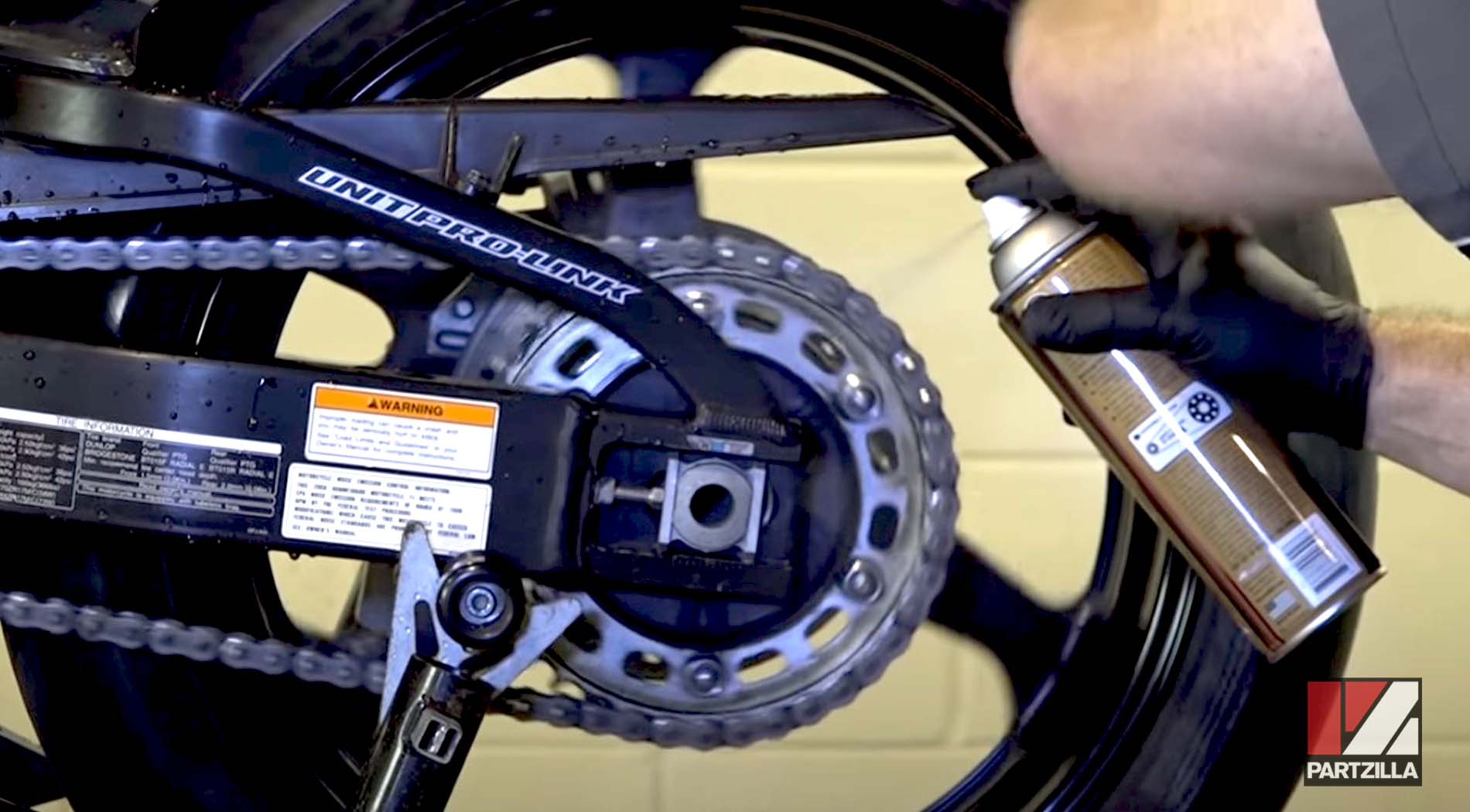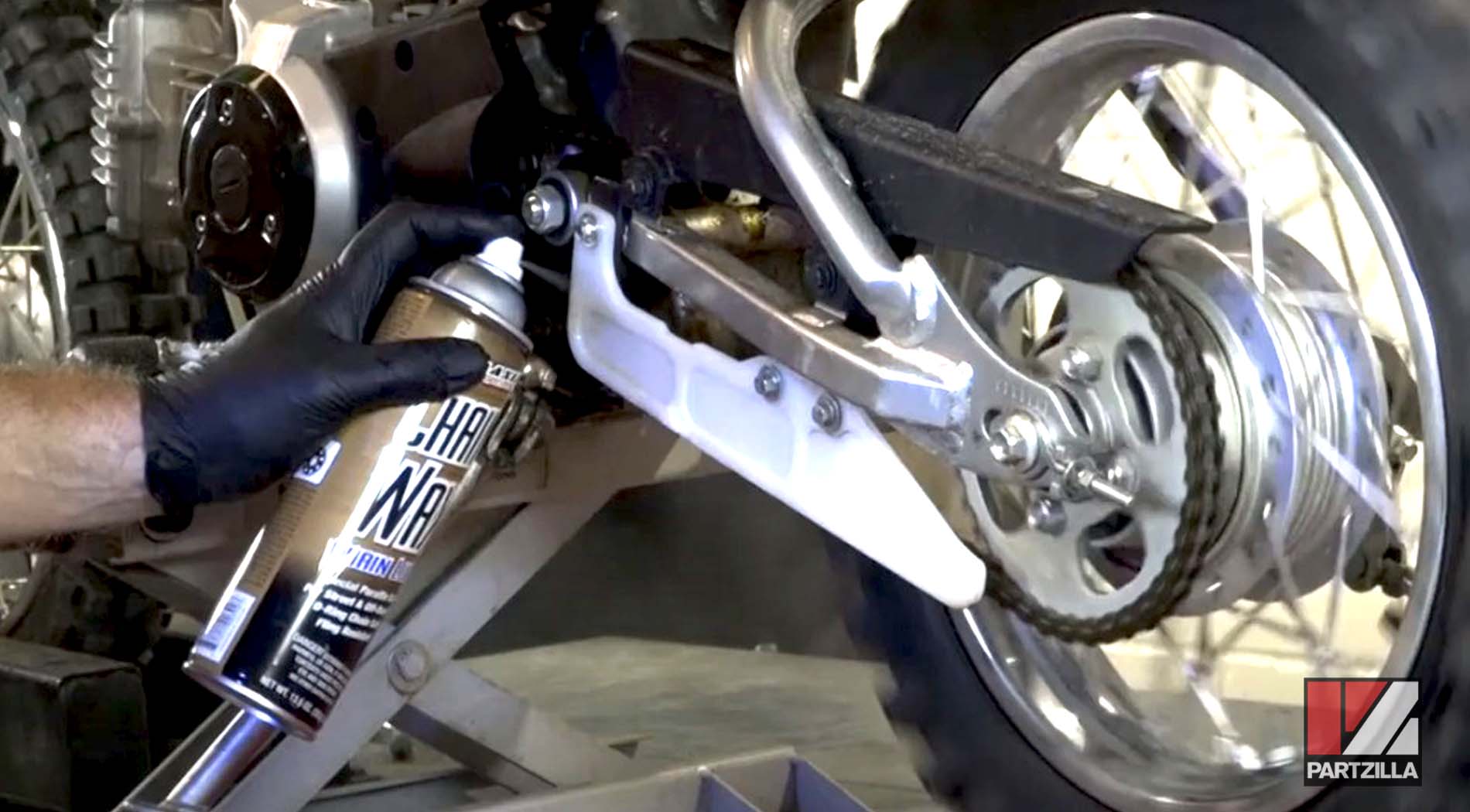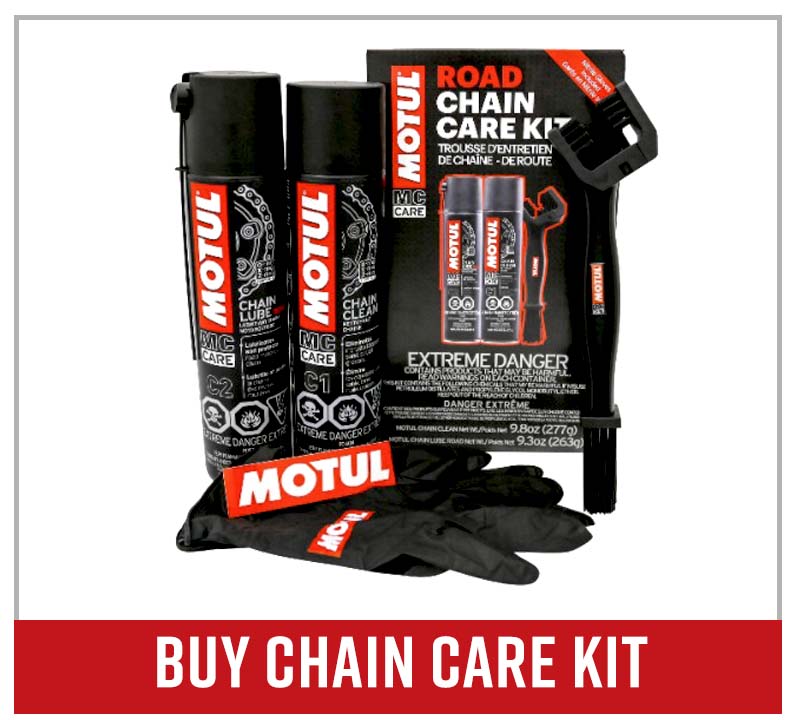Guide to Using Motorcycle Chain Lube
Your motorcycle’s chain is the responsible for transferring power from the engine to the rear wheel, and it needs to be well-lubed to do its job. Any resistance in the chain, such as an unwillingness for the links to pivot and the chain to move around the sprockets, is manifested as a loss of power at the rear wheel.

The only thing that keeps your bike’s chain moving freely is the lubrication, so you must keep it properly lubed at all times. Doing so means the chain will last longer, which of course saves you money. Here's a guide on using motorcycle chain lubricants.
How Often a Motorcycle Chain Should be Lubed
Your motorcycle’s chain should be lubed whenever the links aren’t moving freely, it starts getting noisy, or it becomes dry to the touch. The longevity of chains and sprockets depend on proper lubrication, much like any other moving metal part.

Lube your motorcycle’s chain immediately after cleaning it. How often you have to clean the chain depends on what type of bike it is and the conditions in which you ride it. Obviously dirt bike chains need to be cleaned more often than street bike chains. If you clean and lube your motorcycle’s chain regularly, you may not to have to re-lube the chain between scheduled cleanings.
Follow your motorcycle’s owner’s manual for the manufacturer’s cleaning recommendations, but in general:
- Standard and cruiser bike chains and sprockets should be cleaned and lubed once every 500 miles, or every two weeks.
- Performance and sport bike chains and sprockets should be cleaned and lubed once every 300 miles, or every two weeks.
- Off-road and dirt bike chains and sprockets should be cleaned and lubed after every ride.
What Lubricant to Use
First off, never lube your motorcycle’s chain and sprockets with anything other than a formulated chain lube. That means no WD-40 or engine oil. WD-40 is a water displacement spray, not a lubricant, and engine oil doesn’t have the chemical properties to prevent it from quickly being flung off a fast-moving motorcycle chain. Use only formulated motorcycle chain lubes.

Wet and Dry Lubes
Choosing a chain lube can be a bit baffling because products are often marketed with confusing or catchy names like “wet lube” and “dry lube.” The problem with these names is that they mean different things to different people. For example, some might interpret “wet lube” to mean it remains fluid and slick, and “dry lube” to mean it solidifies slightly once applied. Others define “wet lube” as formulated for use in wetter riding conditions and “dry lube” for use in drier riding conditions. The truth is all modern chain lubes protect your bike’s chain and sprockets regardless of what they’re called.
Lubes for O-Ring Chains and Standard Chains
Don’t fret about the nuances between wet and dry lubes, but make sure to check whether the one you purchase is formulated for O-ring chains or standard chains to match your bike’s chain type.

O-ring chains have synthetic rings between the inner and outer links that seal in lubricating grease inside the chain pins during manufacture. Most motorcycles use O-ring chains because they’re long-lasting and require less maintenance.
Standard chains don’t have O-rings between the inner and outer links, so they're metal-on-metal and require more maintenance. However, standard chains transfer more power to the rear wheel, so some bikes use standard chains.
NOTE: X-ring chains and Z-ring chains are classed as O-ring chains.
Chain Lube Properties
Other than a lube’s compatibility with your motorcycle’s chain type, the best choice will depend on your personal preferences. Manufacturers have developed chain lubes with varying strengths and weaknesses, so always read the description on a particular product to determine whether it’ll be suitable for your motorcycle’s chain. Keep an eye out for water resistance (for wet conditions), dirt resistance (for dry conditions) and anti-fling (or clinging) capabilities.

Types of Chain Lube
Like chain cleaners, chain lubes are all designed to protect the chain, but some have different properties. For example, what they call chain paste is more labor-intensive to apply, but some riders swear by it. However, the ease of spray-on lubes has made them far more popular. Chain wax provides solid protection against water and dirt, but is more prone to being flung off the chain.

Some chain lubes provide excellent penetration, cling well and are resistant to fling-off, while others remain slicker and oily after application and offer good water resistance, but pick up dirt and dust. A lube that solidifies slightly after application offers good dirt and dust resistance, but is less effective against water. Many riders use a waxier, drier chain lube for summer riding when there’s more dust and less moisture around, then switch to an oilier, wetter chain lube for winter riding when conditions offer less dust and more moisture.
How to Lube Motorcycle Chains and Sprockets
Lubricating a motorcycle chain simply involves spraying or directly applying the lube to a clean, dry chain. It’s important that chains are properly cleaned, or else any old dirt and oil will bind with the new lube to form a sticky paste that’ll inhibit the lube’s performance. Once the lube is applied, wipe away any excess from the wheel, tire and swingarm.





